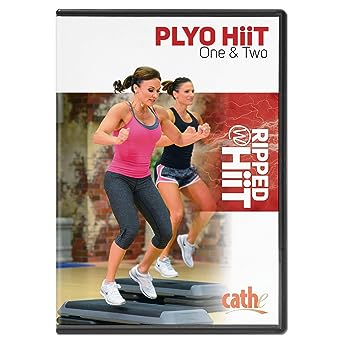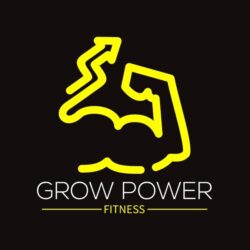Introduction to HIIT Workout
In the ever-evolving world of fitness, various workout routines promise to deliver incredible results. One such powerful training method that has gained popularity in recent years is High-Intensity Interval Training, commonly known as HIIT Workout. HIIT is not just another fitness trend; it’s a highly efficient and effective way to achieve your fitness goals. Let’s delve deeper into the world of HIIT and explore why it’s a game-changer in the realm of workouts.
What is HIIT?
High-Intensity Interval Training involves alternating short bursts of intense exercise with brief recovery periods. Unlike traditional steady-state cardio, HIIT pushes your body to its limits, demanding maximum effort during each interval. The workout sessions are relatively short but incredibly impactful.

15-Minute Yoga HIIT 1.0 (Workout)
Benefits of HIIT
Improved Cardiovascular Health
HIIT significantly improves cardiovascular health by increasing the heart’s capacity and enhancing blood flow. The intervals of intense activity followed by short rest periods challenge the heart, making it stronger and more efficient.
Efficient Calorie Burn
For those seeking weight loss, HIIT is a dream come true. The intense nature of the workouts leads to a substantial calorie burn not only during the exercise but also for hours after the session, thanks to the afterburn effect.
Time-Saving Workouts
In today’s fast-paced world, finding time for lengthy workout sessions can be challenging. HIIT workouts can be completed in a fraction of the time compared to traditional workouts, making them ideal for busy individuals.
Increased Metabolic Rate
HIIT stimulates the body’s metabolism, leading to an increased calorie burn even at rest. This metabolic boost is beneficial for weight management and overall energy levels.
How to Get Started with HIIT?
Before diving into the intensity of HIIT, it’s essential to approach it with proper planning and caution.
Consultation with a Doctor
If you’re new to exercise or have any health concerns, it’s crucial to consult with a healthcare professional before starting any workout program.
Warm-up and Cool Down
As HIIT can be physically demanding, warming up is essential to prepare the body for the upcoming challenges. Cooling down post-workout aids in recovery and reduces the risk of injury.
Choosing Exercises
HIIT can incorporate various exercises, such as jumping jacks, sprints, burpees, and more. Select exercises that match your fitness level and target specific muscle groups.
Setting Intervals and Rest Times
Determining the duration of work intervals and rest periods depends on your fitness level and goals. Start with shorter intervals and gradually increase the intensity as you progress.

Body Groove HIIT DVD Collection
HIIT Equipment and Gear
One of the best things about HIIT is its versatility; it can be done with minimal equipment or even none at all.
Bodyweight Exercises
Many HIIT workouts rely solely on bodyweight exercises, making it a cost-effective and convenient option.
Dumbbells and Kettlebells
To add resistance and increase the challenge, incorporating dumbbells and kettlebells into your HIIT routine can take your workout to the next level.
Jump Rope
Jump ropes are excellent for cardio-focused HIIT workouts, enhancing coordination and agility.
Medicine Ball
Incorporating a medicine ball can add an extra dimension of strength and power to your HIIT routine.
Sample HIIT Workout Routine
Now, let’s look at a sample HIIT workout routine that you can try:
- High Knees: 30 seconds
- Stand with feet hip-width apart and lift knees towards your chest alternately, at a rapid pace.
- Jump Squats: 45 seconds
- Perform squats and explode upwards into a jump, then land softly and repeat.
- Mountain Climbers: 60 seconds
- Assume a plank position and alternate bringing your knees towards your chest in a running motion.
- Burpees: 45 seconds
- Begin in a standing position, perform a squat, kick your feet back into a plank, return to the squat position, and jump up.
- Plank Jacks: 30 seconds
- Start in a plank position and jump your legs wide apart and back together while maintaining the plank.

Cathe Friedrich: Ripped with HiiT – Plyo HiiT
Common Mistakes to Avoid
While HIIT can be immensely beneficial, certain mistakes can hinder your progress and lead to injury.
Overtraining
Pushing your body beyond its limits without adequate rest can lead to burnout and overtraining, hampering your fitness journey.
Ignoring Proper Form
Maintaining proper form during HIIT exercises is crucial to prevent injuries and ensure maximum effectiveness.
Not Listening to Your Body
Each individual’s fitness level is unique, and it’s essential to listen to your body’s signals and modify workouts accordingly.
Combining HIIT with Other Exercises
HIIT can be an excellent standalone workout, but it can also complement other forms of exercise.
Strength Training
Incorporating strength training alongside HIIT can help build muscle and improve overall body composition.
Yoga and Pilates
Combining HIIT with yoga or Pilates can enhance flexibility, balance, and mindfulness.
Running and Cycling
For cardio enthusiasts, alternating between HIIT and steady-state running or cycling can add variety to your routine.

Cathe Friedrich XTrain All Out Low Impact HiiT Cardio Workout DVD For Women – Use for Cardio, HIIT Workout Training, Weight Loss, and Fat Burning
HIIT for Different Fitness Levels
Beginners
Beginners should start with lower-intensity intervals and gradually increase the difficulty as they build stamina.
Intermediate
Intermediate individuals can challenge themselves with longer work intervals and shorter rest periods.
Advanced
Advanced fitness enthusiasts can perform more complex movements and incorporate advanced HIIT variations.
Nutrition and Hydration for HIIT
To maximize your HIIT workouts and support recovery, paying attention to nutrition and hydration is essential.
Pre-workout Meals
Consuming a balanced meal with carbohydrates and protein before a workout provides the necessary energy.
Post-workout Recovery
Replenish your body with protein and carbohydrates after a HIIT session to aid muscle repair and glycogen restoration.
Overcoming Challenges in HIIT
Staying consistent with HIIT can be challenging, but it’s essential to overcome obstacles to achieve your fitness goals.
Motivation
Find a workout buddy or set specific goals to stay motivated and on track.
Plateaus
If you hit a plateau, try varying your exercises or increasing the intensity to break through.
Injury Prevention
Proper warm-up, cool down, and using correct form are vital in preventing injuries during HIIT.

Cathe Friedrich Low Impact Metabolic XTrain Super Cuts Total Body Workout DVD For Women – Use for Cardio, Toning and Sculpting, HIIT Workout Training, and Aerobic Conditioning
Staying Consistent with HIIT
Consistency is key to seeing results with HIIT.
Setting Realistic Goals
Set achievable goals and celebrate your progress along the way.
Creating a Routine
Incorporate HIIT workouts into your weekly schedule to build consistency.
Tracking Progress
Keep track of your workouts and improvements to stay motivated.
HIIT and Mental Health
In addition to physical benefits, HIIT can positively impact mental health.
Stress Reduction
HIIT can act as a stress-reliever, promoting a sense of well-being.
Boosting Mood and Energy
The endorphins released during HIIT can improve mood and increase energy levels.
The Future of HIIT
As fitness continues to evolve, HIIT is likely to undergo further advancements.
Technological Advancements
New fitness gadgets and apps can enhance the HIIT experience.
Hybrid Workouts
Combining HIIT with other fitness disciplines can create exciting hybrid workouts.
Conclusion
High-Intensity Interval Training (HIIT) is more than just a workout; it’s a powerful fitness strategy that offers numerous benefits. From improving cardiovascular health and burning calories to being adaptable for all fitness levels, HIIT has become a staple in the fitness world. By incorporating HIIT into your routine and focusing on proper form and safety, you can achieve remarkable results in less time.

Cathe Friedrich: Ripped with HiiT – HiiT Circuit Upper Body
FAQs
Is HIIT suitable for beginners?
Yes, beginners can start with modified and lower-intensity HIIT workouts.
How many times a week should I do HIIT?
2 to 3 sessions per week are generally recommended, allowing sufficient time for recovery.
Can HIIT be done without equipment?
Absolutely! Many HIIT workouts utilize bodyweight exercises for convenience.
Will HIIT help me lose weight?
Yes, HIIT can aid weight loss by boosting metabolism and burning calories.
Is HIIT safe for individuals with certain medical conditions?
While generally safe, it’s essential to consult a healthcare professional before starting HIIT, especially if you have any medical concerns.
Is HIIT suitable for everyone?
HIIT can be effective for many people, but it may not be suitable for individuals with certain medical conditions, injuries, or limitations. It’s crucial to consult a healthcare professional before starting any new workout program.
What is the ideal duration of a HIIT workout?
The duration of a HIIT workout can vary based on fitness levels and goals. Typically, a HIIT session lasts between 20 to 30 minutes, including warm-up and cool-down.
Can I do HIIT every day?
While HIIT can provide excellent results, it’s not recommended to do it every day. Your body needs time to recover and repair after intense workouts. Aim for 2 to 3 HIIT sessions per week, interspersed with other forms of exercise.
What should I eat before a HIIT workout?
Opt for a balanced meal containing carbohydrates and protein about 1 to 3 hours before a HIIT session. This will provide your body with the necessary energy for the intense workout.
Is it necessary to warm-up before HIIT?
Yes, warming up is essential before any physical activity, including HIIT. A proper warm-up prepares your muscles and cardiovascular system for the upcoming intense exercises, reducing the risk of injury.
Can I do HIIT if I’m a beginner and out of shape?
Yes, HIIT can be modified to suit beginners and individuals who are currently out of shape. Start with lower-intensity exercises and gradually increase the intensity and duration as you build stamina.
How long should the rest periods be during HIIT?
Rest periods in HIIT should be kept short, typically between 10 to 60 seconds, depending on your fitness level and the intensity of the exercises.
What are the best exercises for HIIT?
The best exercises for HIIT are those that engage multiple muscle groups and elevate your heart rate. Common examples include burpees, jumping lunges, mountain climbers, and high knees.
Can I do HIIT if I have joint issues?
If you have joint issues, it’s essential to choose low-impact exercises or modify high-impact moves to reduce stress on your joints. Consulting a fitness professional or physical therapist can be beneficial.
Is it normal to feel sore after a HIIT workout?
Yes, it’s common to experience muscle soreness after an intense workout like HIIT. This is a natural part of the recovery process. Make sure to stretch and hydrate properly to aid in recovery.
Can I do HIIT during pregnancy?
Pregnancy is a delicate period, and it’s best to consult with your healthcare provider before engaging in any new exercise routine, including HIIT.
How long does it take to see results with HIIT?
The time to see results varies from person to person based on factors like fitness level, consistency, and nutrition. With regular HIIT sessions and a balanced diet, you can expect to see positive changes in a few weeks.
Can I do HIIT if I have heart conditions?
If you have a heart condition, it’s essential to seek clearance from your doctor before attempting HIIT. They may advise you on suitable exercise intensity and modifications.
Is there an age limit for doing HIIT?
HIIT can be adapted for different age groups, but older individuals or those with health concerns should exercise caution and consult their doctors.
Can HIIT improve athletic performance?
Yes, HIIT can enhance athletic performance by improving cardiovascular endurance, speed, and power.
